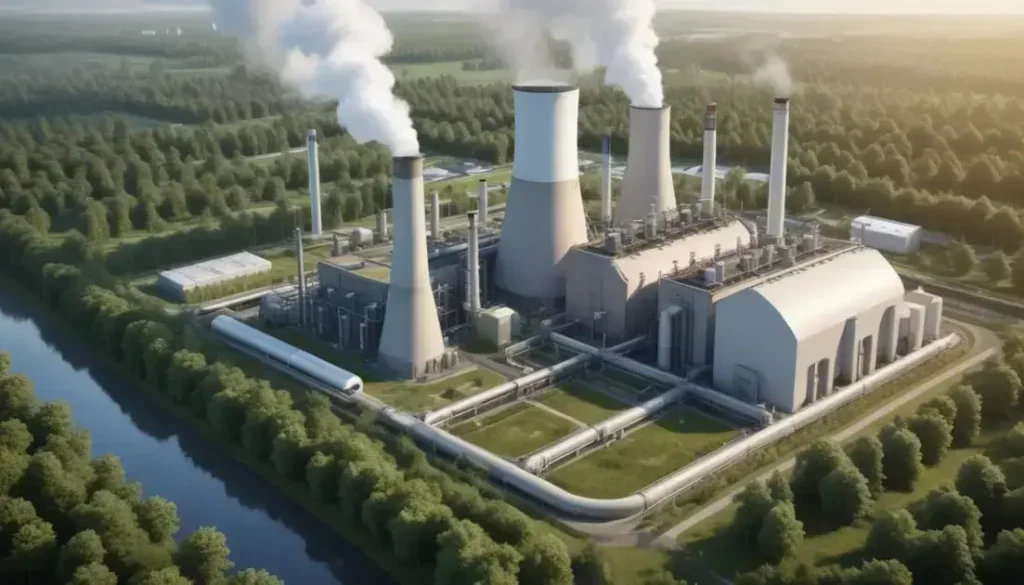Carbon removal is a critical process for mitigating climate change, employing technologies like direct air capture to reduce atmospheric CO2 levels, with companies like JPMorgan leading initiatives that impact businesses globally, including Indian firms.
In the evolving realm of climate strategy, carbon removal methods are becoming pivotal. With major players like JPMorgan Chase stepping up, there’s much to explore about their impact.
Understanding the direct air capture technology
Understanding direct air capture (DAC) technology is crucial in the fight against climate change. This innovative approach aims to remove carbon dioxide directly from the atmosphere, allowing us to tackle greenhouse gas emissions effectively. DAC systems utilize large fans to draw air, which then passes through chemical solutions or filters that capture CO2 molecules.
Once captured, the carbon dioxide can be stored underground or repurposed for various uses, including the production of synthetic fuels or materials. The flexibility of this technology highlights its potential as a key player in decarbonizing industries.
Implementing DAC effectively can provide significant benefits, not only in reducing atmospheric CO2 but also in advancing energy security. Countries can leverage this technology to meet their climate goals while fostering an economy focused on sustainability.
Furthermore, the growth of the direct air capture market creates opportunities for businesses to engage in emissions reduction strategies and contribute positively to the environment. As companies across various sectors consider integrating DAC solutions, the impact on Indian firms and their approach to sustainability can be profound, offering a roadmap to balance economic growth with environmental responsibility.
The significance of JPMorgan’s carbon removal agreements
The significance of JPMorgan’s carbon removal agreements cannot be overstated as they represent a bold step towards sustainability in finance. These agreements highlight the bank’s commitment to addressing climate change through innovative solutions that involve partnering with carbon capture technology firms.
By investing in projects that facilitate the removal of carbon from the atmosphere, JPMorgan aims to offset its carbon footprint while also supporting companies dedicated to creating a cleaner future. This initiative offers a clear path for alignment with global climate goals and encourages other financial institutions to take similar actions.
Furthermore, these agreements can substantially impact Indian businesses keen on adapting to new environmental regulations. As organizations look to enhance their sustainability efforts, partnerships with JPMorgan may provide essential funding and resources to implement effective carbon management strategies.
Overall, JPMorgan’s push for carbon removal not only advances its corporate responsibility goals but also sets a standard for the financial services industry. This approach showcases how finance can significantly contribute to environmental sustainability, encouraging a broader shift towards a low-carbon economy.
In conclusion, the impact of carbon removal is pivotal
As more companies, like JPMorgan, focus on carbon removal strategies, the significance of this movement becomes clearer. These efforts are essential for combating climate change and will play a crucial role in shaping a sustainable future.
Both global giants and local businesses in India have the opportunity to participate in this shift towards greener practices. By embracing carbon capture technologies and investment strategies, organizations can significantly reduce their environmental footprint.
Ultimately, the push for sustainability is not just a trend—it is a necessary step for survival in a changing world. The commitment to carbon removal is a clear sign that serious action is underway, and it is a journey that every firm should consider taking for future success.
Frequently Asked Questions
What is direct air capture technology?
Direct air capture technology is a method used to remove carbon dioxide directly from the atmosphere, using chemical processes to capture CO2 for storage or reuse.
How does JPMorgan contribute to carbon removal efforts?
JPMorgan contributes to carbon removal by entering agreements with companies focused on carbon capture technology, helping to fund and promote sustainable practices.
Why is carbon removal important for Indian businesses?
Carbon removal is important for Indian businesses as it helps them meet environmental regulations and enhance their sustainability efforts, positioning them competitively in the market.
What are the potential benefits of carbon removal agreements?
The potential benefits include reduced carbon footprints for companies, increased investment in green technologies, and alignment with international climate goals.
How can companies start incorporating carbon removal strategies?
Companies can start by exploring partnerships with carbon capture technology firms and investing in projects aimed at reducing their overall carbon emissions.
What role do financial institutions play in sustainability?
Financial institutions play a crucial role by funding sustainable projects and encouraging businesses to adopt carbon removal and other eco-friendly practices.


